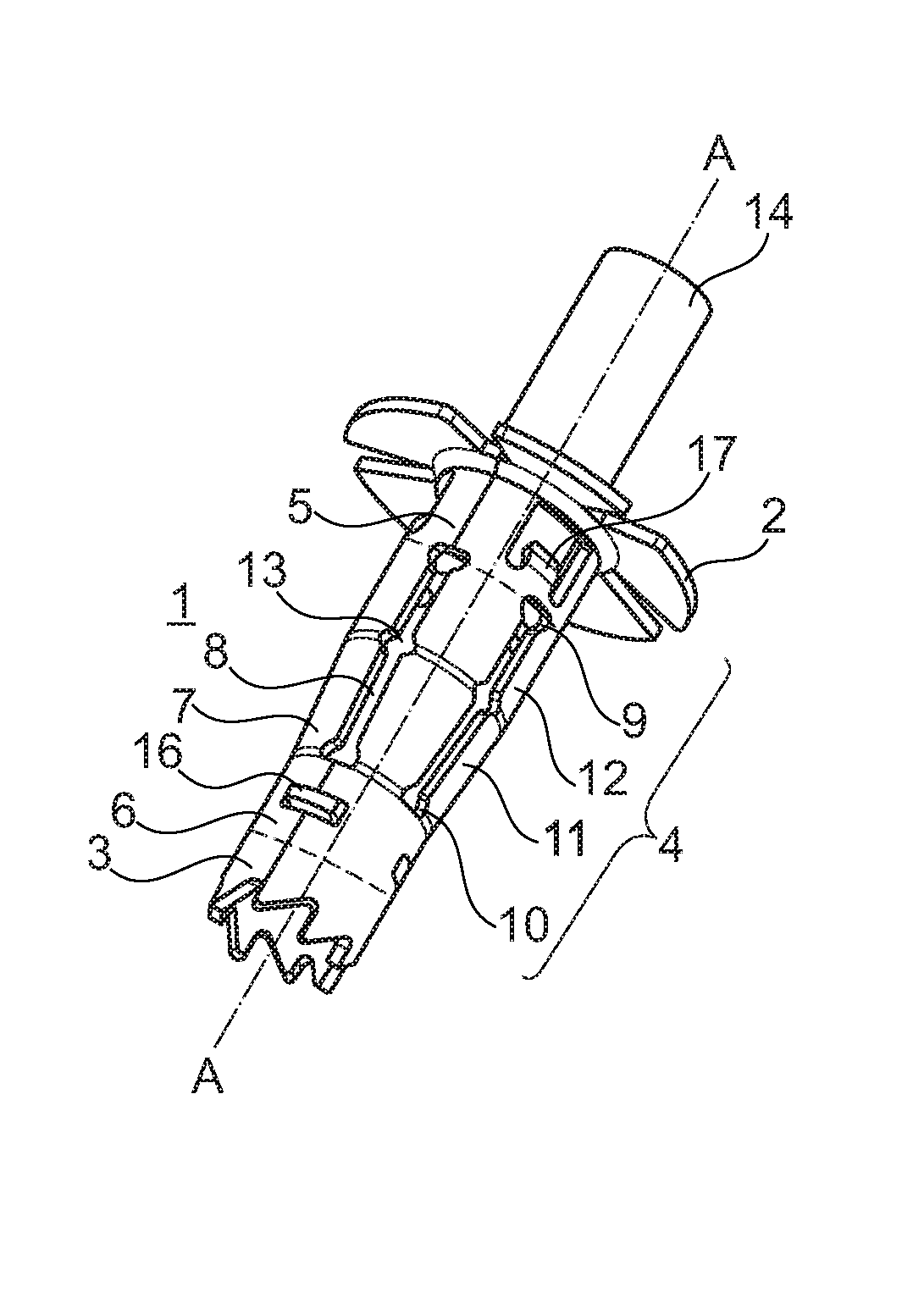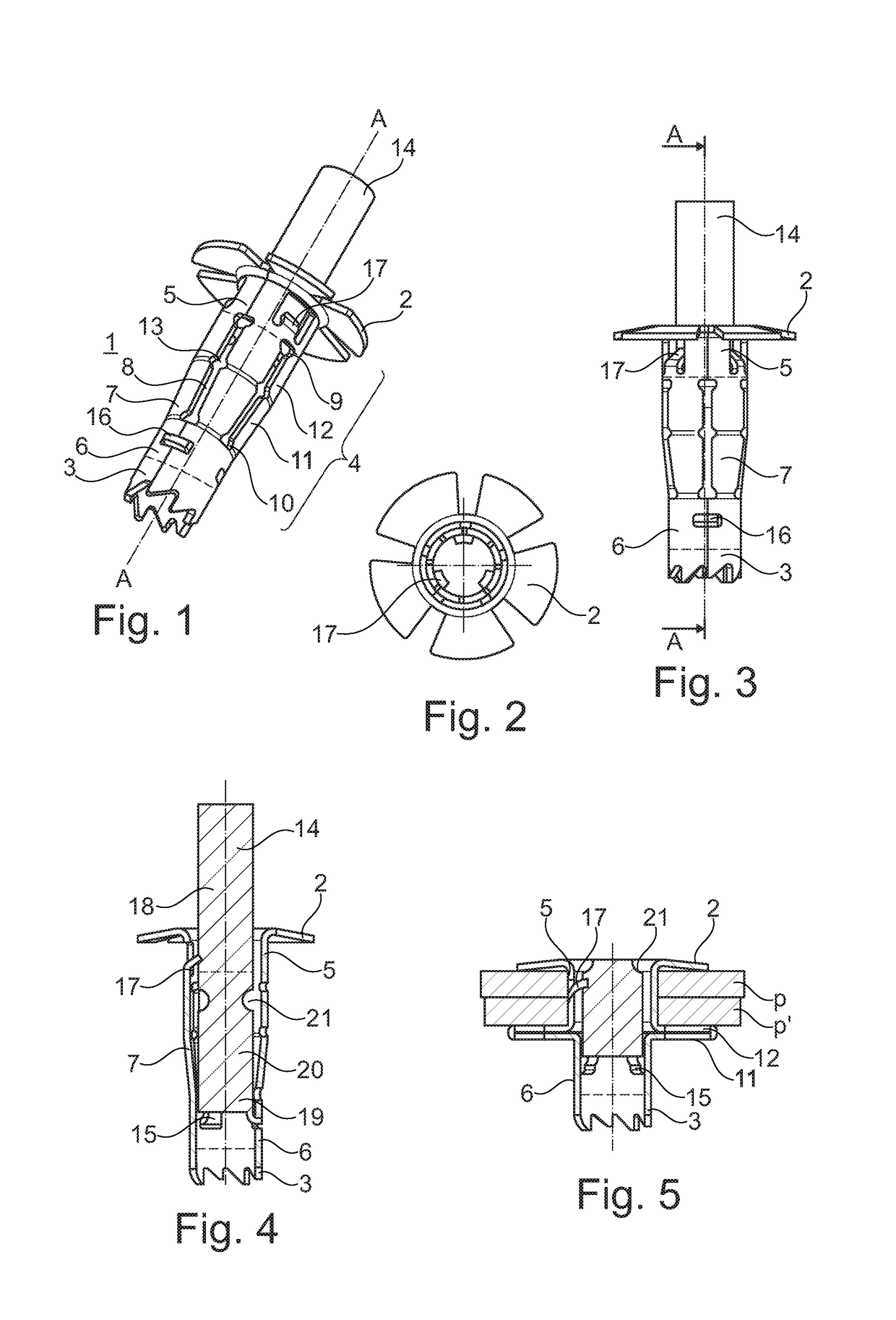Self-piercing rivet with high mechanical strength against tearing out and shearing
a rivet and mechanical strength technology, applied in the direction of threaded fasteners, screws, fastening means, etc., can solve the problems of rivets still presenting mechanical strength weaknesses, not enabling optimal reinforcement of self-drilling anchors, and not satisfying manufacturers' types of self-drilling anchors. to achieve the effect of increasing speed
- Summary
- Abstract
- Description
- Claims
- Application Information
AI Technical Summary
Benefits of technology
Problems solved by technology
Method used
Image
Examples
Embodiment Construction
[0036]FIGS. 1 to 5 show a rivet 1 of the invention for assembling two plaques (P and P′ shown in FIG. 5). By way of non-limiting example, the plates may be fiberglass plates.
[0037]The rivet 1 includes a flange 2, coming to bear for example on one of the plates to be assembled, and a piercing end 3.
[0038]The flange 2 extends in a plane that is perpendicular to an axis AA of the rivet 1. The flange 2 may have tabs (not shown) that bite into the bearing surface in order to prevent it from moving in axial rotation.
[0039]In this embodiment, the piercing end 3 is of the double-toothed circular hole saw type. The hole saw includes an inside bore with teeth distributed circumferentially about the bore in order to reduce dust and fiber-tearing during piercing.
[0040]Without going beyond the ambit of the invention, the piercing end could be of the drill-bit type with a diamond coating (not shown).
[0041]Between the flange 2 and the piercing end 3, the rivet 1 presents a barrel-shaped tubular bo...
PUM
 Login to View More
Login to View More Abstract
Description
Claims
Application Information
 Login to View More
Login to View More - R&D
- Intellectual Property
- Life Sciences
- Materials
- Tech Scout
- Unparalleled Data Quality
- Higher Quality Content
- 60% Fewer Hallucinations
Browse by: Latest US Patents, China's latest patents, Technical Efficacy Thesaurus, Application Domain, Technology Topic, Popular Technical Reports.
© 2025 PatSnap. All rights reserved.Legal|Privacy policy|Modern Slavery Act Transparency Statement|Sitemap|About US| Contact US: help@patsnap.com


